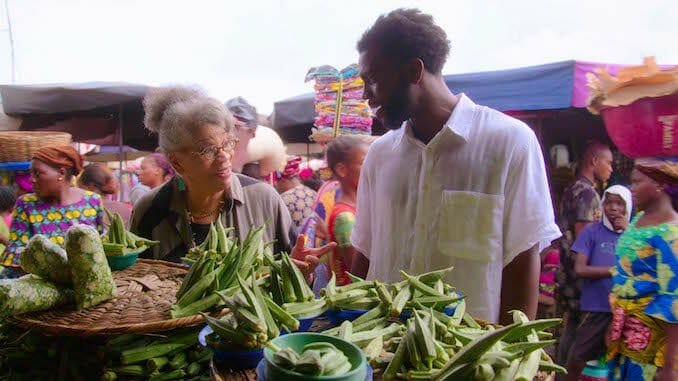Why Netflix’s High on the Hog Made Me Even Prouder of My African American Heritage
Photo Courtesy of Netflix
My Texas roots have provided me with the ability to spin a tale.
I can trace my family back through four generations. We have/had scholars and also those with just a sixth grade education. First, second, and even third and fourth cousins are extended family. Whenever we get together there are always lots of memories, crazy-but-true stories, and food.
If love is the universal language, then food is love. For African Americans, food also meant survival during slavery, a time when the only way they could feed their families was by being forced to plant and prepare it for others, getting whatever was left over (or cut out) afterwards.
So when I saw the trailer for Netflix’s limited series High on the Hog, I thought, “oh, Southern Black folks food, barbecue (yum!)—maybe I’ll watch it sometime.” After all, I’m a foodie and I like to cook. (I exercise basically so I can eat A LOT).
But it wasn’t until I took the time to watch that I realized this four-hour documentary is an origin story as much as a food story; one that is badly needed in these times of opposition to teaching the history and brutality of slavery in textbooks, as well as the hostile reaction to the 1619 Project.
The four-part series is hosted by Stephen Satterfield, a former restaurant manager, chef, food writer, and producer of Point of Origin, a food podcast. He starts in Benin, Africa, where he meets with James Beard-award-recipient and High on the Hog cookbook author Jessica B. Harris, taking walks through Benin’s open-air market, passing food stalls filled with bountiful amounts of healthy-looking fruits and vegetables.
I realized that those stalls contained foods that began there, not here—yams (not to be confused with sweet potatoes) that look like “hairy” logs, okra, peas, rice, watermelon—and that many of these vegetables and fruits were once gathered to go on the ships. Those ships contained flesh and blood humans who were treated as cargo. The food was meant to feed them, but many did not want or refused to eat under such conditions.
In perhaps the most painful and somber part of the documentary, the area in which the newly minted slaves were put on the boat is shown. Hundreds of years later, it is a burial ground of stones and statues. However, the long dirt road slaves walked in chains remains as a memorial and reminder.
But this is still a food story; eventually Satterfield and Harris’ conversation turns to cuisine, and pretty soon they are sitting down to eat in a Benin restaurant. As they eat, much is discussed about the feel and texture of the food and the familiarity of it, as the two African Americans are reminded of their origins. As I watch, so am I.
-

-

-

-

-

-

-

-

-

-

-

-

-

-

-

-

-

-

-

-

-

-

-

-

-

-

-

-

-

-

-

-

-

-

-

-

-

-

-

-








































